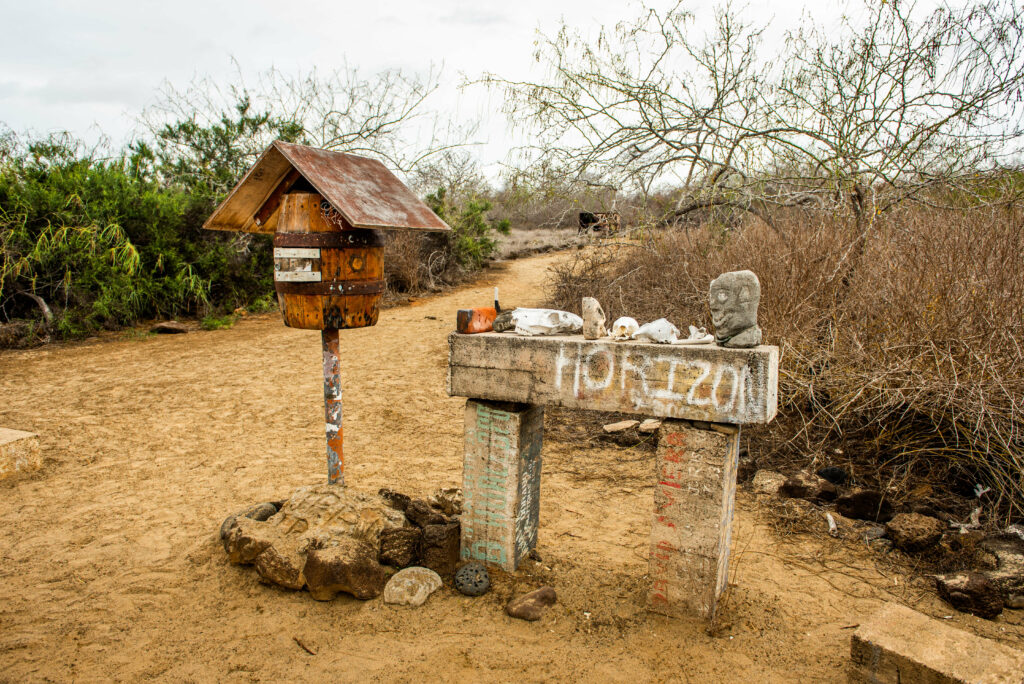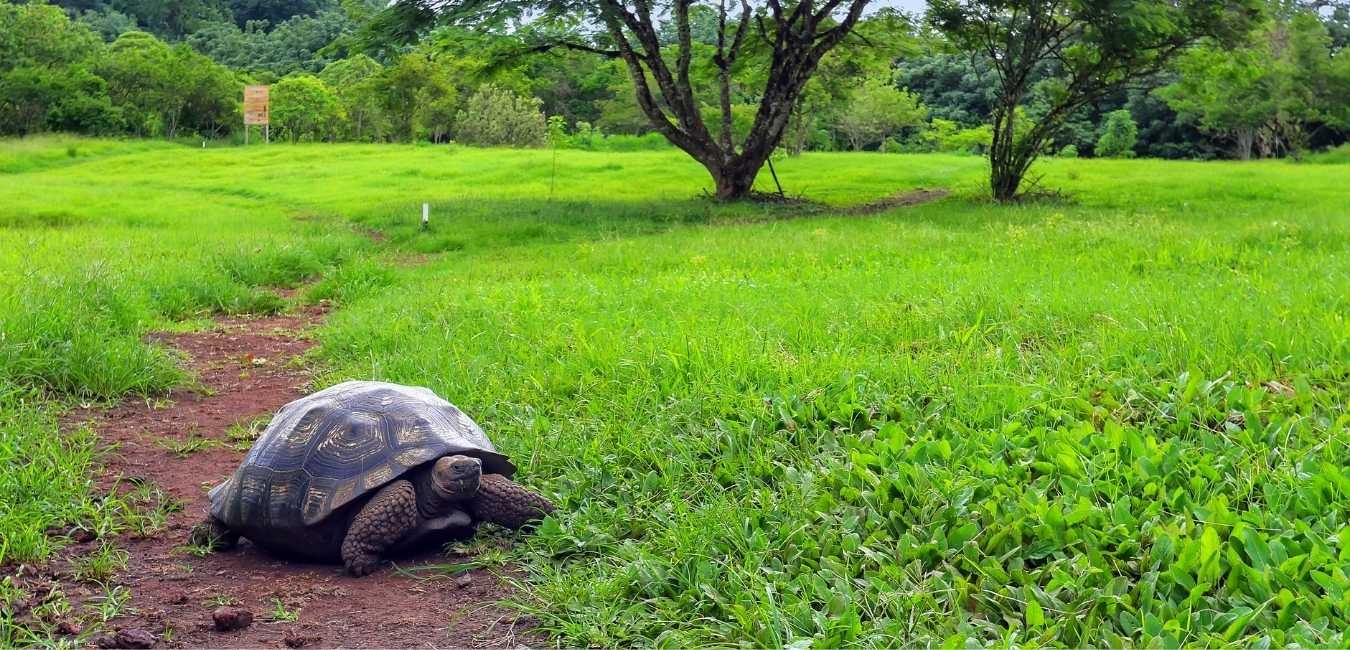Explore the oldest islands of the archipelago, the highlands of these areas boast tropical cloudforests and developed flora. Espanola island is one of the archipelagos gems, it is the only place in the world where the waved albatross nests and features colorful iguanas. The Post office bay is another highlight of this route.
Day 1 (Monday) : San Cristobal Airport & Interpretation Center
AM: FLIGHT TO GALAPAGOS

Photo: marktucan
This day you will fly to the Galapagos Island. Due to the Galapagos Government, a fee of 20 USD must be paid for the migration control card.
Once in San Cristobal, passengers must go through an inspection point at the airport to make sure that no foreign plants or animals are being introduced to the archipelago. Also, this inspection point is where passengers have to pay for the entrance to the Galapagos National Park under the following parameters:
Passengers Foreigners $100 and Children $50 (under 12 years old).
Later on, your guide will pick you, and will carry your luggage to the bus. Passengers will arrive to the Catamaran Seaman Journey on a motorized boat called panga.
PM: SAN CRISTOBAL, INTERPRETATION CENTER

© Latin trails
This is an interpretation center with exuberant gardens and stunning ocean views. Visitors at the interpretation center can learn a lot from the geological and human history of the islands, conservation facts and natural history. This is the oldest museum of Natural History in the Galapagos Islands which attempts to preserve the archipelago. It is indeed inspiring and motivating to watch and learn all of their research and attempts.
Day 2 (Tuesday) : San Cristobal Island - Galapaguera & Cerro Brujo
AM: SAN CRISTOBAL ISLAND, GALAPAGUERA

© Latin Trails
A short visit will take place at the Galapaguera, a good place to observe Galapagos tortoises in its natural habitat.
San Cristobal island has endemic species such as: the Mockingbird Nesomimus melanotis, lava lizard (Microlophus bivittatus), Chatham Leaf-toed Gecko (Phyllodactylus leei) and the tortoises. All of these species can be observed in this place, the beach is really big and it works as a nesting zone for marine tortoises. Between January and May, it is common to find the footprints of the female tortoises who have climbed to the sand dunes to deposit their eggs! This truly is a worthy experience to be a part of.
PM: CERRO BRUJO

Photo: SL_Photography
Cerro Brujo is a beautiful white coral beach where you can swim and watch birds and sea lions, plus you can snorkel. This is the first coast where Charles Darwin walked on, in 1835. In this marvelous lava landscape, you can watch seabirds like blue-footed boobies, Nazca boobies, herons, frigate birds and shore birds. The protected bay is well known for its young tortoises which like to swim around.
The pools with salty water behind the sand dunes were used by the fishermen as a salt mine in order to preserve food for the local population. Among the fauna you can observe the Chatham Mockingbird and the San Cristobal Lava Lizards, both species are endemic to the island and unique to the area. Furthermore, you will see the Galapagos turtles and with luck, the little bird known as the Pájaro Brujo in Spanish, an endemic species in San Cristobal Island.
The vegetation covers all the route, where you can find species like the candelabrum cactus and carob trees. Located on the north coast of Isla San Cristobal it is a peaceful place with white sand and crystal water, a perfect combination for an incredible stay.
Day 3 (Wednesday) : Española Island - Gardner Bay & Suarez Point
AM: ESPAÑOLA ISLAND, GARDNER BAY

© Latin Trails
Located on the north-eastern coast of Hood, Gardner Bay offers an excellent beach to relax, swim and even kayak, plus the opportunity to observe sea lions (Zalophus wollebaki), here we can also observe sharks in the crystal clear ocean waters.
At this place you can see three species of Darwin finches:
A subspecies of the large-billed cactus finch (Geospiza fuliginosa), which is similar to the large-billed terrestrial finch;
The small-beaked ground finch (Geospiza fuliginosa and;
The singing finch (Certhidea Olivacea) which is another endemic subspecies.
Both resident and migratory birds are observed.
PM: SUAREZ POINT

© Latin Trails
This area is great for spotting blue-footed boobies, albatrosses and Nazca boobies. A beautiful site on the oceanfront, the large waved albatrosses use the cliff as a launching pad. The famous attraction is the magnificent blowhole, spurting water high into the air at least from 50 to 75 meters high. This site presents wonderful photograph opportunities.
Day 4 (Thursday) : Florena Island - Cormorant Point & Champion Islet & Post Office Bay
AM: CORMORANT POINT, CHAMPION ISLET

© Latin Trails
This site offers probably the best flamingo lagoon in the
Galapagos; it is also one of the largest in the islands. It’s situated between two tuff lava cones that give the area a special atmosphere. There are various species of shorebirds to observe besides flamingos; the most frequent are common stilts, white-checked pintail ducks, and other migratory birds. It is very interesting to see the two distinct beaches: “The Green Beach” (due to its high percentage of olivine crystals in the sand) and the “Flour Sand Beach” which is made up of coral.
After the interesting walk, the group is taken to Champion Islet, a great place to enjoy snorkeling and underwater wildlife. Some of the animals that can be seen are sea turtles, sea lions, and multiple fish thanks to the nearby coral reef.
PM: POST OFFICE BAY

© Latin Trails
Historically, this site is the location of a wooden barrel that was placed in the 18th century by the crew of a whaling ship. It has been used since this time by marines and tourists as a post office. The idea is to carry letters or postcards to their destination by hand. Besides, this site was the landing area for some of the first colonists. This day’s afternoon is thought to be a relaxing time for visitors to enjoy the beach and the beauty of Galapagos.
Day 5 (Friday) : Charles Darwin Station & Baltra Airport
AM: CHARLES DARWIN STATION

Photo: DanFLCreativo
Although the great majority of Galapagos visitors come here to observe and appreciate natural wonders, it is also interesting to learn how the protection and conservation of the islands are carried out. This path offers the possibility to learn aspects and feel synchronized with nature.
After the morning excursion you will be taken to the airport for your flight to the mainland. Transfer to Baltra airport.










